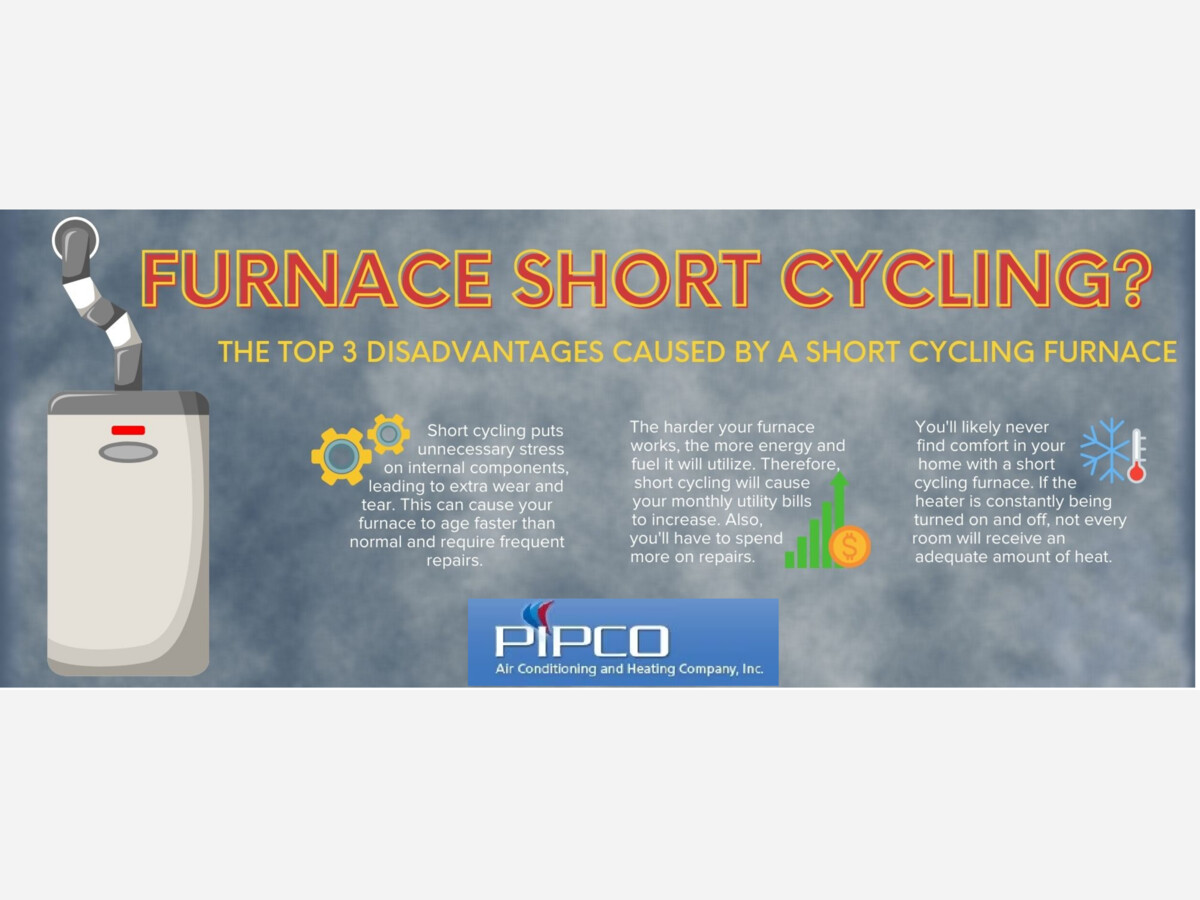Image

Question: My gas furnace runs for only a short period of time and then shuts off before it can bring our house up to the temperature set on the thermostat. This repeats over and over and yet the house is not warming up. What do you do?
 Local Experts since 1963
Local Experts since 1963What you are describing is called short cycling, and there are a number of potential causes. First though, it is necessary to understand the basic sequence of operation of how your furnace comes on, heats your home, and finally shuts off when the desired temperature is reached. Then we will describe the possible causes, especially those most likely to encounter.
First Step - Send the temperature signal to the control circuit
When your thermostat senses that the temperature is below the set point and it is time to signal the furnace to start, or the call for heat.
Before Starting - Air-Flow, the necessary first element
The thermostat signal goes to the control board which will turn on the inducer to create a draft to draw the fresh intake air into the combustion chamber and out through the exhaust, or at least through the heat exchanger. If the draft isn’t sufficient, the pressure switch will not sense the negative pressure and will not close the switch’s electrical contacts to can start the furnace firing. This is a safety measure to prevent flames being ignited if there is not enough air flow through the combustion chamber. This is the first point where your furnace operation can be interrupted.
Next, fuel, spark, and flame
When the pressure switch does sense the draft in the combustion chamber it closes its electrical contacts to allow current to signal the control board to open the gas valve and send current to the ignitor. Then the burners will light and the flame sensor will sense the flame. Now, if the burners do not light, the flame sensor will signal the control board to shut off the gas valve. This is a safety measure to prevent gas from building up in the house. This is the second point where your gas furnace startup sequence can be stopped.
Last, turn on the air and check the temperature
After about 30 seconds to a minute from when the burners light the blower motor will come on. During this time, the third point that can stop the furnace from heating properly has been reached. If the high limit switch at or above the heat exchanger in the furnace detects that the temperature is too high in the heat exchanger, this signal will shut off the gas valve and stop the furnace heating cycle.
Otherwise the blower will run until the set temperature on the thermostat is reached. When that occurs the control board signals the shut off of the gas valve, shutting of the burners and the blower will continue to run for a predetermined time before it shuts off.

So looking in turn at each one of the events in the sequence above, let us examine conditions that can lead to shutting off the heating cycle. The first is low air flow. This could be caused by a restriction to either the intake, exhaust or both, and can be caused by the following conditions:
Clogged air filter
A bad pressure switch or a clogged tubing going to the pressure switch. Clogs in this location can be caused by water, in condensing furnaces and often the ultimate cause is a blocked drain. The next event in the sequence involves fuel and fire, the firing of the ignitor, turning on the gas valve, and the sensing of the flames. Again three potential points of failure however the most likely is:
A dirty or worn flame sensor with oxidation or carbon or a bad flame sensor prevents the sensor from sending feedback to the control board that flames are present. This shuts down the process by shutting off the gas valve. This condition can often be corrected by cleaning rather than replacing the flame sensor if the sensor isn’t completely bad.
If the gas valve or ignitor are bad the furnace will not light at all and the blower will never come on. The last condition, overheating is sensed by another safety measure, the high limit switch. If the temperature gets too high this switch interrupts the heating cycle. If the furnace gets too hot, it can result in a cracked heat exchanger, a dangerous condition which can bring exhaust fumes and therefore deadly carbon monoxide into the air ducts of your home.
Overheating too can have simple causes. The most likely cause here again is obstructed air flow, but not within the furnace, but through the ducts from the furnace. The most likely simple cause of overheating is blocked or obstructed vents/registers. Frequent causes include:
The registers may have been turned off by people in the home trying to regulate the heating and/or cooling in a room
Moving furniture to a new location that blocks the air flow or return air
Wall hangings, curtains or draperies that block registers or returns
For more information check with the experts in Hunt Valley and all surrounding areas.